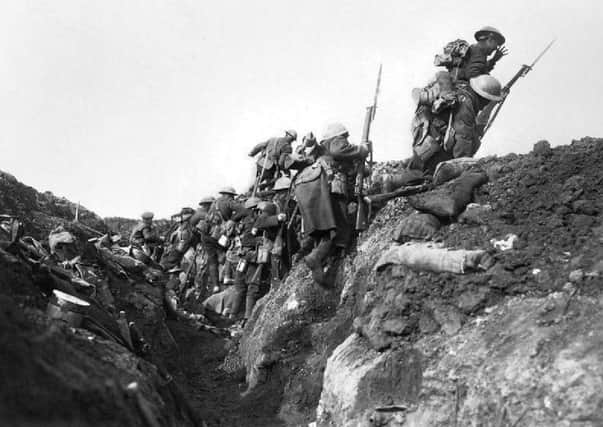Remembering the fallen heroes of the Somme


Beginning on July 1, 1916, and intended to achieve a decisive victory for the British and French against the Germans, during the First World War, the Somme became a bloody stalemate on battlegrounds that turned into muddy quagmires after torrential rains.
It was a battle that claimed almost 20,000 British lives on the first day alone. There were more than a million casualties on both sides by the time it ended 141 days later, on November 18, 1916.
Advertisement
Hide AdAdvertisement
Hide AdThe Battle of the Somme has come to “symbolise the tragic scale and futility of modern industrialised warfare”.
Peter Hoy describes how the battle claimed the lives of so many South Tyneside men, and provides photos of many of those of died in action.
We will be featuring those pictures over the coming days as well as a list of all the fatalities. Peter says: “Saturday, July 1, 1916 was the worst ever day in the history of the British Army.
“It suffered over 57,000 casualties, of whom 19,240 were killed in action. One hundred and eighty eight South Tyneside men died that day, 144 of whom have no known grave and are commemorated on the Thiépval Memorial.
Advertisement
Hide AdAdvertisement
Hide Ad“Almost exactly half of the men in the 143 battalions which attacked, became casualties, the equivalent of 75 infantry battalions.
“For every yard of the 16-mile front from Gommecourt to Montauban, there were two British casualties.
“German losses that day were about 8,000 men, with over 2,000 being taken prisoner.”
Peter explains that one of the declared objectives of Sir Douglas Haig (the British commander) was that the battle would help relieve pressure on the French at Verdun.
Advertisement
Hide AdAdvertisement
Hide Ad“Between July 1 and mid-November 1916, 420,000 British soldiers became casualties or about 3,600 for every day, with over 127,000 of these men having been killed.
“One out of every two British soldiers who fought on the Somme never fought again.
“Five hundred and sixteen South Tyneside men are known to have been killed in action or died of their wounds at the Somme, but Haig’s projected ‘Big Push’ failed: there would be no Allied breakthrough in 1916.”
As Peter explains, the preliminary bombardment for the battle began on June 24.
Advertisement
Hide AdAdvertisement
Hide AdHere he describes the start of the battle itself, on July 1.
“At 7.28am, 17 mines were blown under the German front line.
“Two minutes later, at zero hour, 60,000 British soldiers, heavily laden with 60lbs of equipment, clambered out of their trenches from Serre to Maricourt and formed into lines 14 miles long. As the lines moved forward in waves, so the artillery barrage lifted off the enemy front-line and rolled forward.
“Many of the men were killed on the uncut German barbed-wire that they had been assured would be totally destroyed, but shrapnel shell could not cut thick barbed-wire. Later that day, 40,000 more men were sent in (to no avail), north of the Albert-Bapaume road, on a front of nine miles – there were no tangible gains.
Advertisement
Hide AdAdvertisement
Hide Ad“Only in the south were the fortified villages of Mametz, Maricourt and Fricourt captured.
“The worst losses were suffered by 34th Division, especially the Tyneside Scottish and the Tyneside Irish brigades, who suffered 6,380 casualties.
“In their assault on La Boisselle, each battalion averaged over 600 casualties. Many of the men killed in the Tyneside Irish were cut down before they even reached their own front line after advancing from their assembly positions on the Tara-Usna Hills line.
“All eight battalion commanders were casualties that day, five being killed. “So shattered were the two Tyneside brigades, with 940 men killed (including 125 South Tyneside men) and some 1,500 wounded, an 80% casualty rate, that they were immediately detached from their division and sent to a ‘quiet’ sector.”